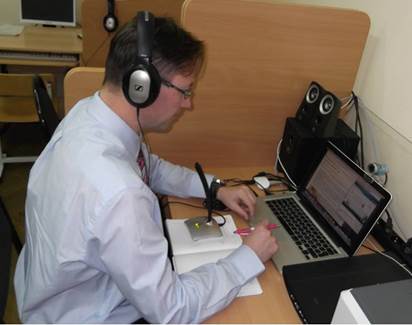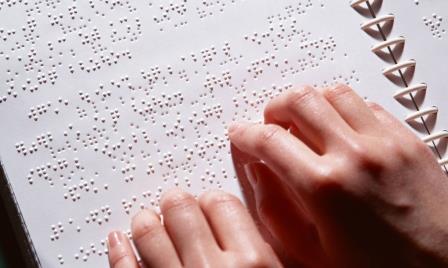Stepus I. S., Gurtov V. A., Simakova A. V. EFFECTIVE INSTRUMENTS FOR PROFESSIONAL ORIENTATION OF SCHOOLSTUDENTS (based on the experience of the Republic of Karelia). LIFELONG EDUCATION: The 21st Century.
2018. № 2 (22).
DOI: 10.15393/j5.art.2018.3964
| Issue 2 (22) |
Problems of continuity of training and education in Russia |
|
EFFECTIVE INSTRUMENTS FOR PROFESSIONAL ORIENTATION OF SCHOOLSTUDENTS (based on the experience of the Republic of Karelia)
 | | Stepus Irina S
leading specialist of the Center for budget monitoring of PetrSU
(Petrozavodsk, Russia)
stepus@petrsu.ru |
 | | Gurtov Valery A
the director of the Center for budget monitoring of PetrSU
(Petrozavodsk, Russia)
vgurt@petrsu.ru |
 | | Simakova Anna V
leading specialist of the Center for budget monitoring of PetrSU
(Petrozavodsk, Russia)
simakova@petrsu.ru |
Keywords:
early professional orientation
students
the Internet-resources
professional orientation lesson. |
Abstract: the article deals with the analysis of the results of the II Republican professional orientation lesson «Live, learn, work in Karelia!» with the use of the Internet-portal «My Career». The Internet-portal provides for interactive professional testing, by the results of which the user may learn about the recommended activities and professions, suitable for their abilities and much-on-demand on the labor market of the Republic of Karelia. The portal presents professional diagrams, containing key characteristics for professions, and the site navigation helps to find out where to recieve relevant education and get a job in line with the selected profession. The efficiency of a lesson is reached through a tight lesson time schedule, consolidations of professional effort and resources of schools, employment service, and governmental structures in the educational sphere. More than 5 000 school students of 8−10 grades took part in the II Republican professional orientation lesson held in March, 2018. The students represented all municipal regions of Karelia. At the beginning of a lesson the school students who have already chosen their professions made just 46 %, and after the lesson the number of the school students who made their professional choice increased up to 86 %.
|
Paper submitted on: 05/14/2018; Accepted on: 05/25/2018; Published online on: 06/25/2018.
References
- Gurtov V. A., Hoteeva E. A. Planirovanie kar'ernoj traektorii shkol'nikov: orientacija na «hochu», «mogu» i «nado» // Integracija obrazovanija. 2018. T. 22. № 1. S. 134‒150.
- Istorija proforientacii v Rossii v infografike [Jelektronnyj resurs] / Centr testirovanija i razvitija «Gumanitarnye tehnologii». URL: https://proforientator.ru/publications/articles/detail.php?ID=5734 (data obrashhenija 16.05.2018).
- Kolesnikova O. A., Krymova N. A. Proforientacija naselenija: istoricheskaja retrospektiva, napravlenija sovershenstvovanija // Voprosy strukturizacii jekonomiki. 2010. № 2. S. 267–270.
- Konferencija «Aktual'nye voprosy razvitija sistemy professional'noj orientacii i obshhestvenno poleznoj dejatel'nosti uchashhihsja» [Jelektronnyj resurs] / Rynok truda i rynok obrazovatel'nyh uslug. Regiony Rossii. URL: http://labourmarket.ru/i-confs/profconf (data obrashhenija 16.05.2018).
- Prjazhnikova E. Ju., Prjazhnikov N. S. Proforientacija: Ucheb. posobie dlja stud. vyssh. ucheb. zavedenij. 2-e izd., ster. M.: Izdatel'skij centr «Akademija», 2006. 496 s.
- Savchenko A. I. Professional'noe samoopredelenie shkol'nikov [Jelektronnyj resurs] / Modernizacija obshhego i professional'nogo obrazovanija. 2016. № 07 (45). URL: http://journal.kuzspa.ru/articles/463/ (data obrashhenija 16.05.2018).
- Skrynnikov I. Internet-resurs dlja proforientacii // Sluzhba zanjatosti. 2015. № 12. C. 24‒26.
- Hodjakova N. V. Proektirovanie sred nepreryvnogo obrazovanija lichnosti [Jelektronnyj resurs] // Nepreryvnoe obrazovanie: XXI vek. Vyp. 4, 2013. S. 1–8. URL: 10.15393/j5.art.2013.2162 (data obrashhenija 16.05.2018).
- Vanhalakka-Ruoho Marjatta, Koski Leena, Silvonen Jussi & Tamminen Merja. Educational pathways of ninth grade adolescents: Transition practices in vocational and academic families. // Australian Journal of Career Development. 2006. № 25 (3). P. 117‒128.
Displays: 7361; Downloads: 901;
DOI:
http://dx.doi.org/10.15393/j5.art.2018.3964














